Junkyard Gem: 1960 Renault Dauphine

During each year of the 1950s, the incredibly cheap Volkswagen Beetle became a bigger and bigger sales success in the United States. It seemed that no import could touch the Beetle after better than 50,000 were sold here for the 1956 model year … but then another little rear-engined European car appeared, and it boasted two more doors than the VW plus a similar price tag. This was the Renault Dauphine, and for a few years it looked like a mortal threat to Beetle sales on our shores. Dauphines mostly disappeared from American streets by the dawn of the 1970s and from junkyards by the 1980s, but I found this one in a Silicon Valley car graveyard recently.
As a matter of fact, there are three Dauphines at the North San Jose Pick-n-Pull as I write this. That trio had been up for sale on Craigslist for quite some time, as a package deal for $1,000. There were no takers, even in the French-car-loving Bay Area, and so all three now reside in their final parking spaces before their inevitable date with the crusher.
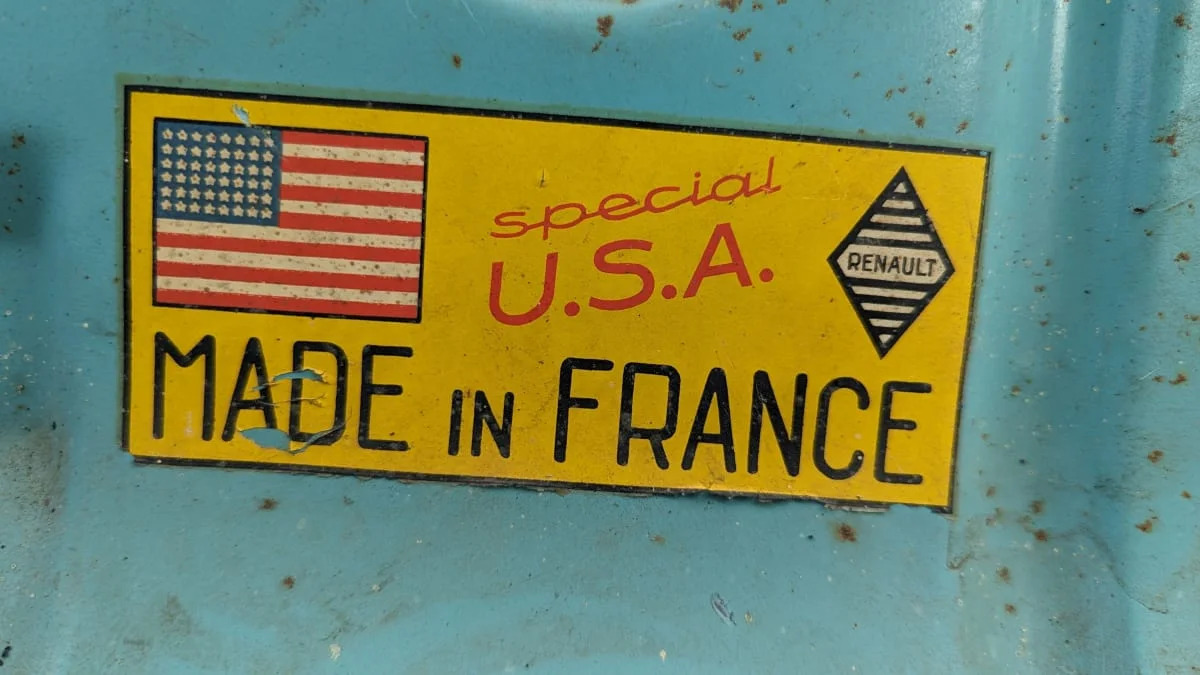
Renault sold more than 200,000 Dauphines in the United States, mostly during the 1957-1960 period. Sales continued through 1966, but never regained their late-1950s glory.
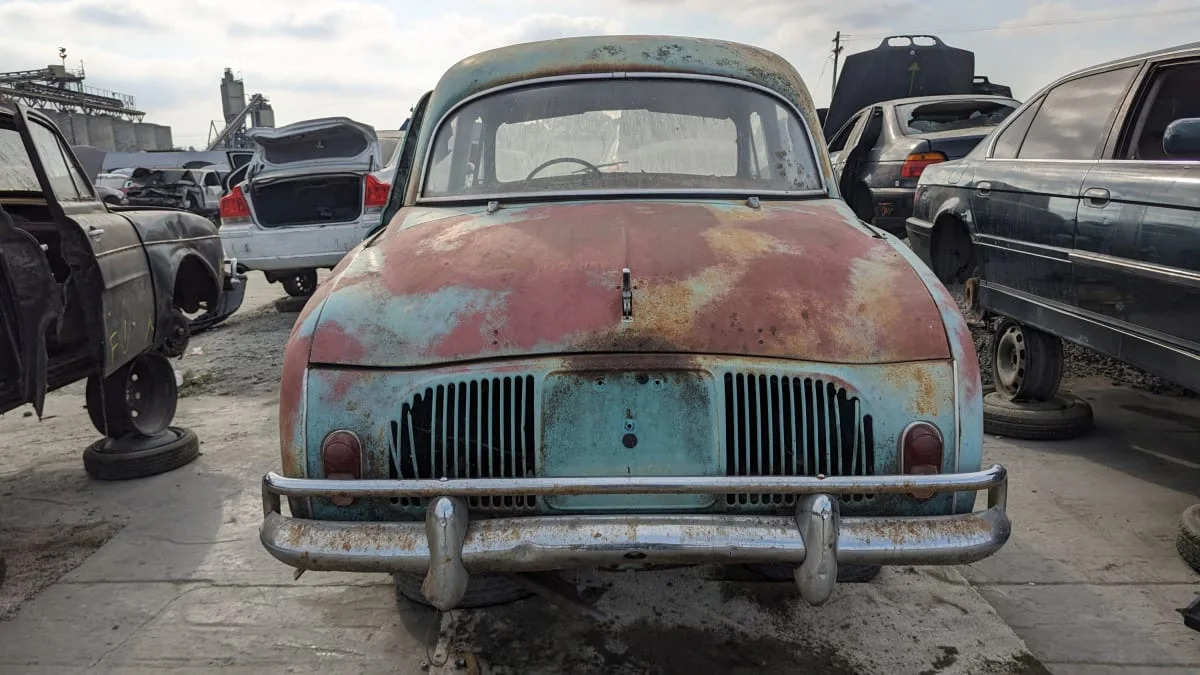
The Dauphine had a rear-engined design with swing axles, just like the Beetle, and so it proved popular in areas with icy roads. My grandfather was a Minnesota ice racer at the time, and he purchased several Dauphines to join his stable of Beetles and Corvairs (they rusted even more quickly than the VWs, which is saying something).
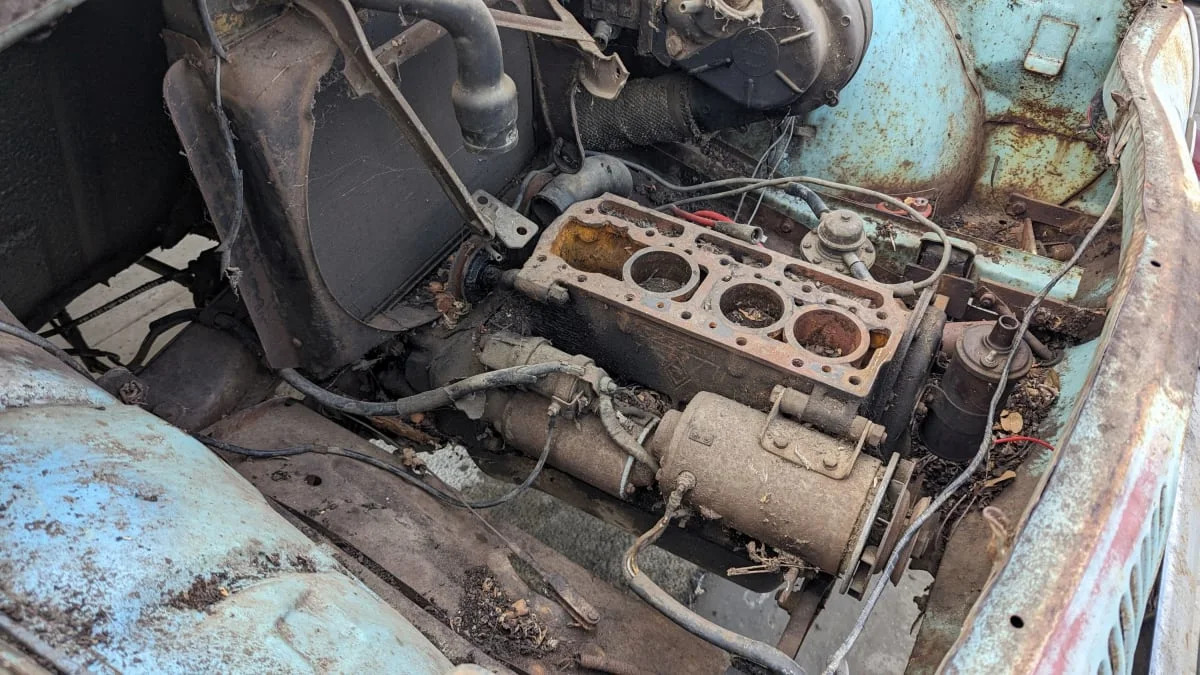
Unlike the air-cooled Beetle, the Dauphine’s engine had a traditional liquid cooling system with a radiator. This added complexity but gave the Renault a heater that worked properly and with less propensity to catch on fire.
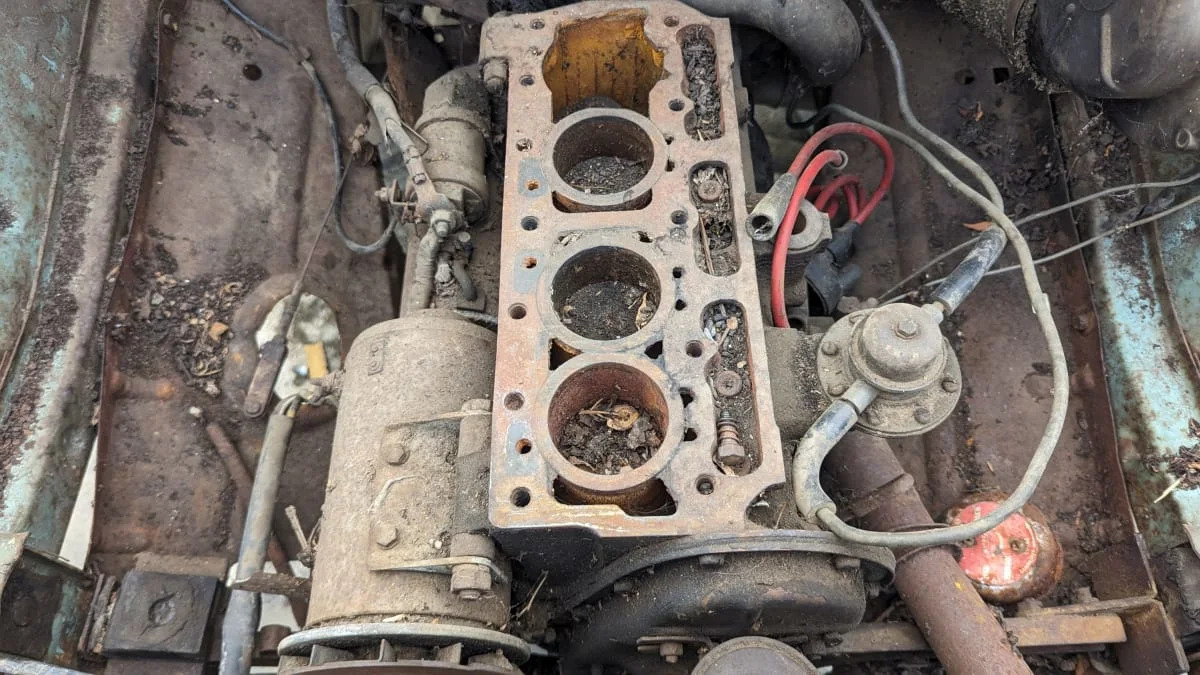
Someone yanked the head off the engine in this one long ago, judging from the rusty detritus in the cylinders. If original, it is an 845cc straight-four rated at 28 horsepower when new. The ’60 Dauphine scaled in at just 1,397 pounds, so it wasn’t as slow as you might think (but still pretty slow). The 1960 Beetle weighed 1,609 pounds and had a 1192cc engine with a mighty 36 horsepower, giving the two rivals similar power-to-weight ratios (49.9 lb/hp for the Dauphine, 44.7 lb/hp for the Beetle).
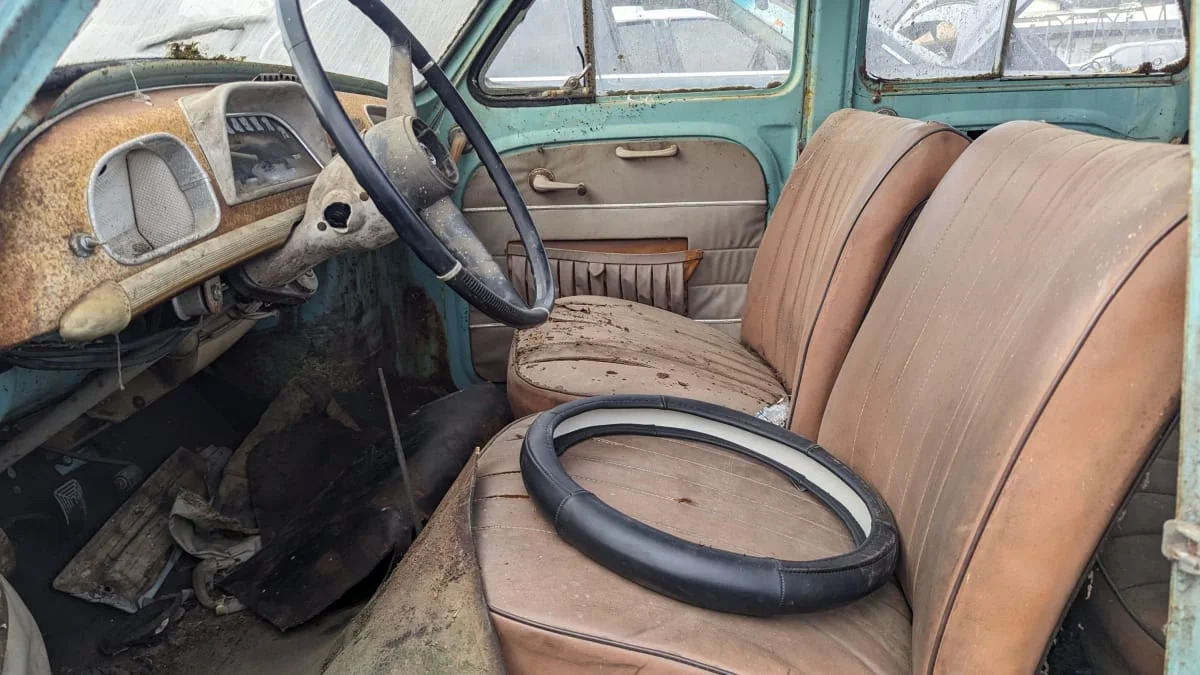
That meant that the ’60 Beetle could pull (slowly) away from the ’60 Renault in a very boring drag race, and that the Dauphine had a slight edge in fuel economy. According to contemporary reviews, the Renault was superior in handling and ride comfort, while the VW did better on general build quality and interior space.
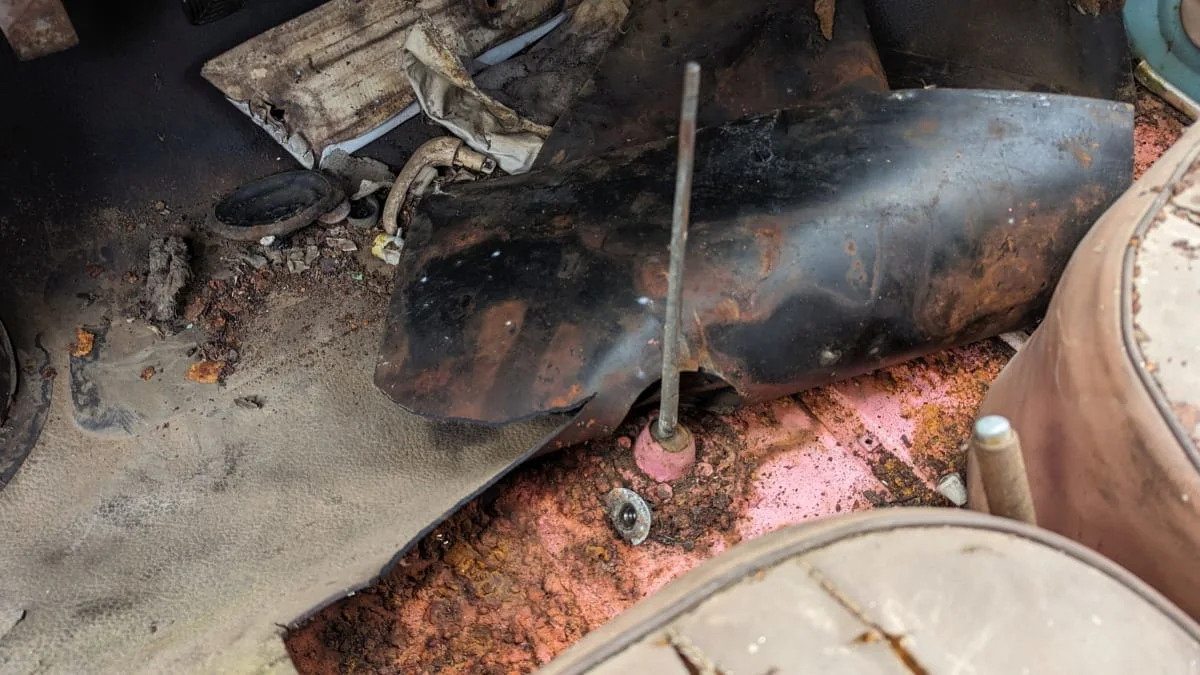
The Beetle had a four-speed manual as standard equipment, while the Dauphine had a three-speed manual (a Dauphine four-speed arrived a bit later on in the 1960s).
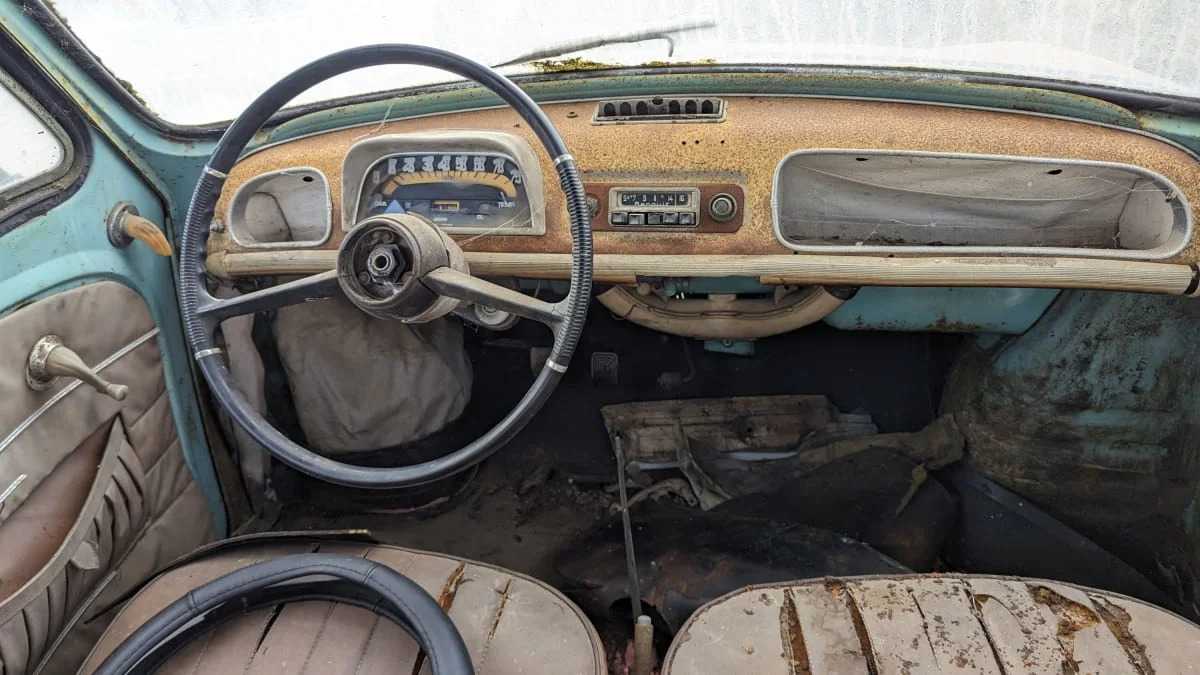
The list price for the 1960 Dauphine was $1,645, or about $17,237 in 2023 dollars. The 1960 Beetle’s MSRP was $90 less, or $16,399 today. Undercutting both by a substantial margin was the 1960 Austin Mini, which cost a mere $1,295 ($13,570 now). If you wanted to buy American yet still pinch pennies in 1960, George Romney’s American Motors Corporation would sell you a Wisconsin-built Rambler American two-door business coupe for just $1,781 ($18,663 after inflation).
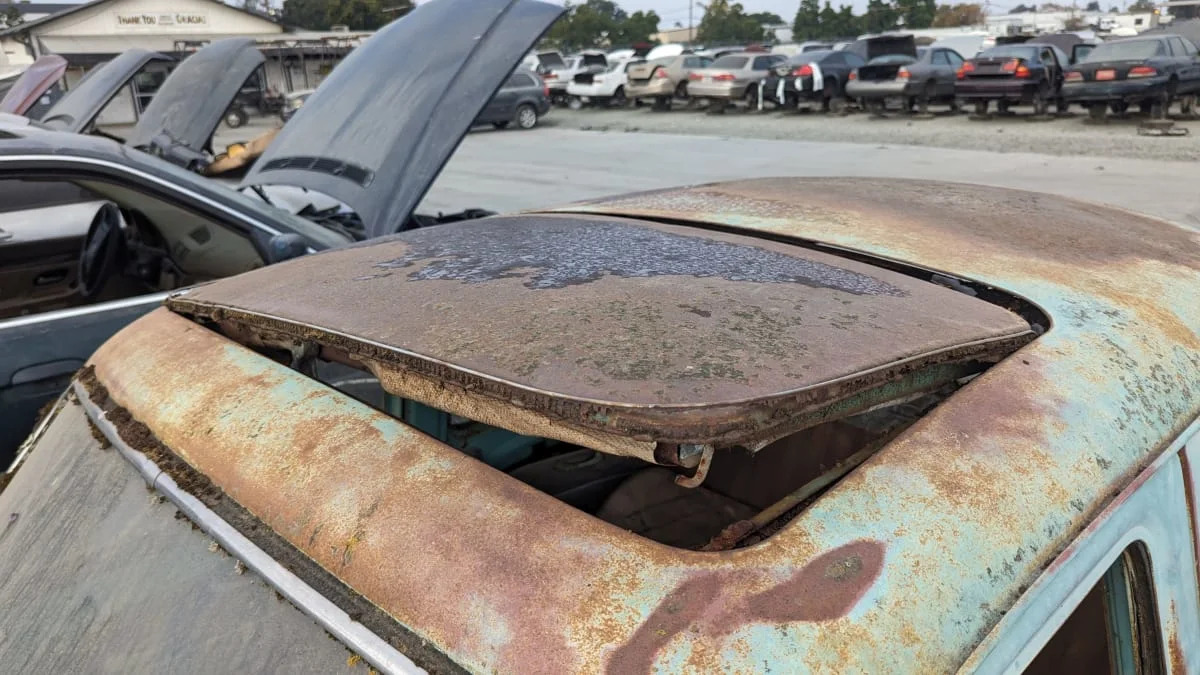
This car has the optional sunroof, which added $55 to the price ($576 in today’s money).
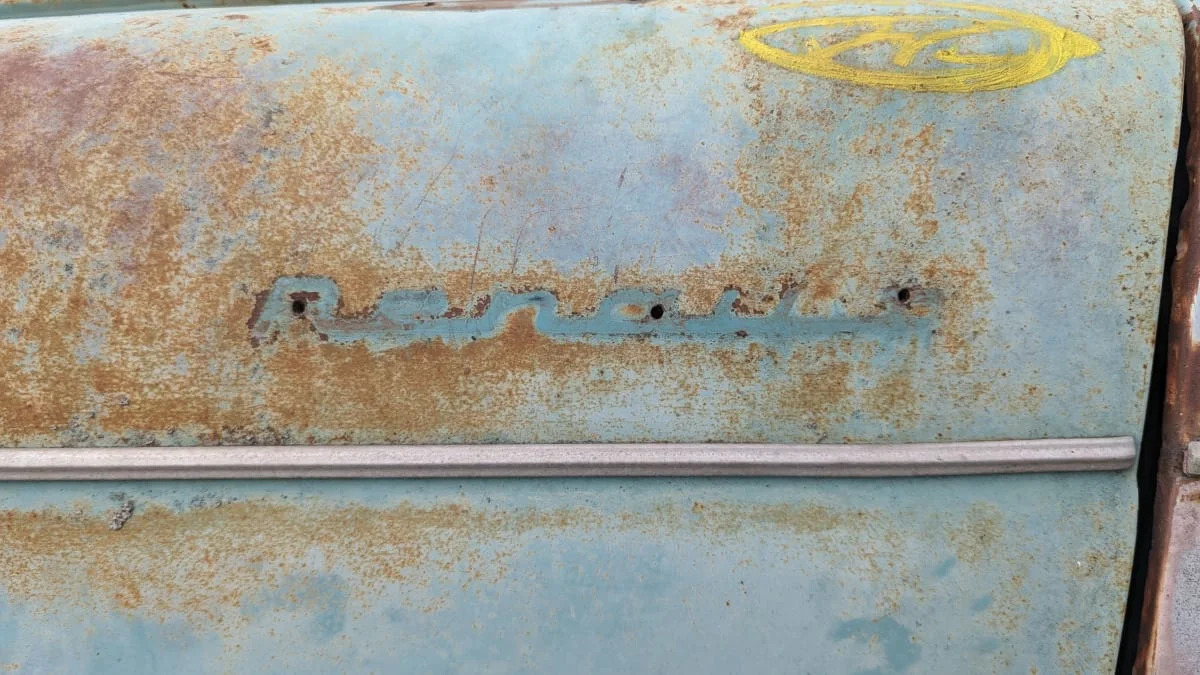
I’m not sure how much the optional factory AM radio cost, but the price tag would have been substantial. Note the CONELRAD nuclear-attack frequency markings at 640 and 1240 kHz.

Very nice Dauphines sell for good money nowadays, but this one is too far gone to be anything beyond a parts donor. Americans could buy new Renaults until the final AMC-built Alliances and Encores were sold as 1987 models, although the occasional Mexican-market Renault shows up in our junkyards from time to time.
Renault’s American marketers felt that the French pronunciation of the manufacturer’s name would be off-putting here, so “reh-NALT” was used for many years in the United States.
With standard American three-speed shift and saucy good looks!
A day of fun with the car made in France to make driving fun again.
Thrifty and frisky.
The home-market commercials showed off the engine’s machining steps.
In Brazil, Willys built Dauphines under license.
Life was just better in a Dauphine.







